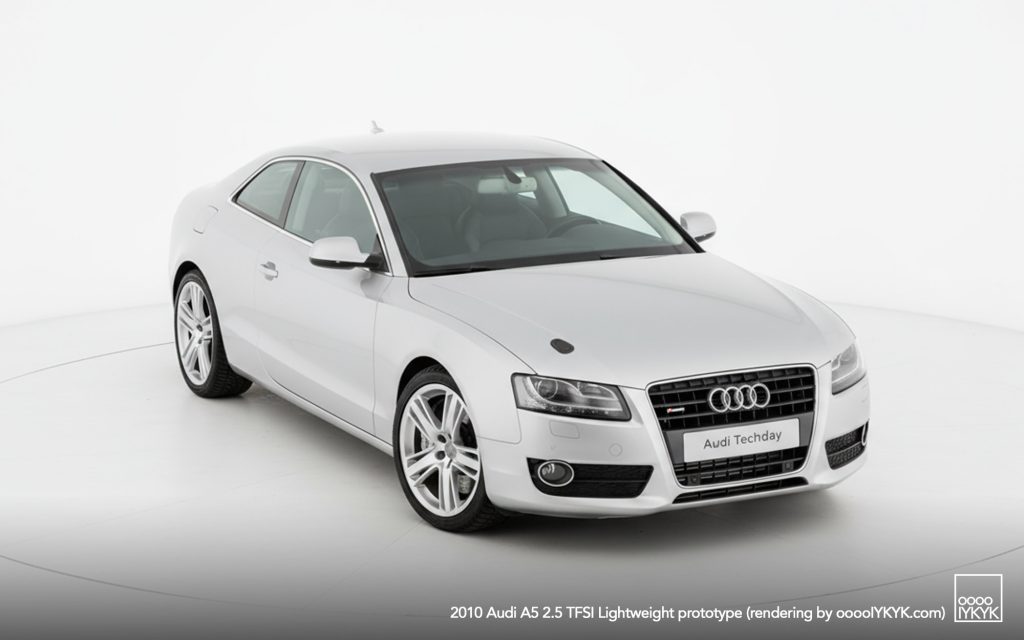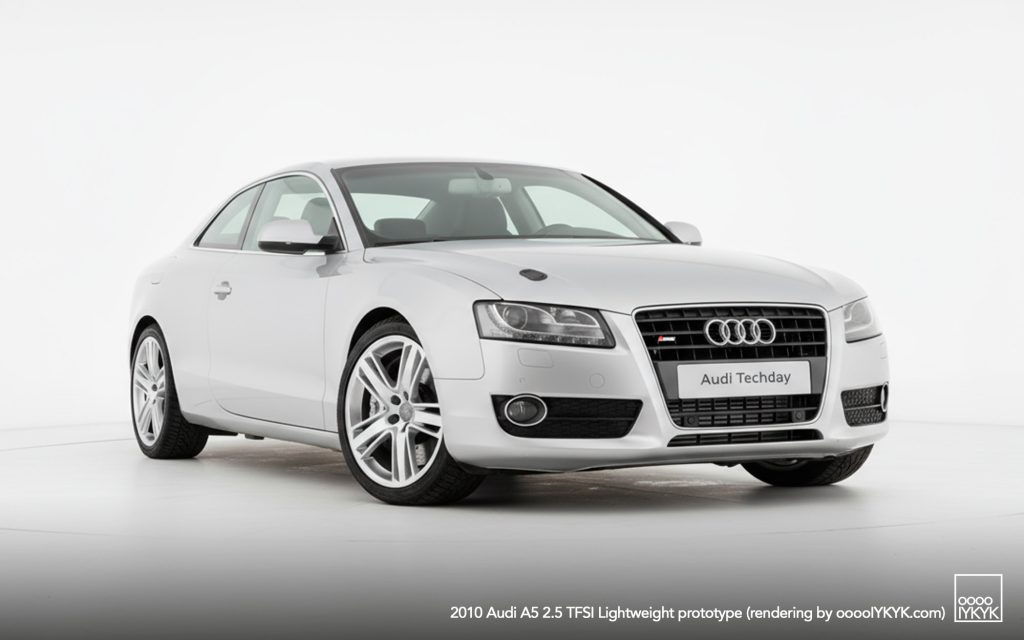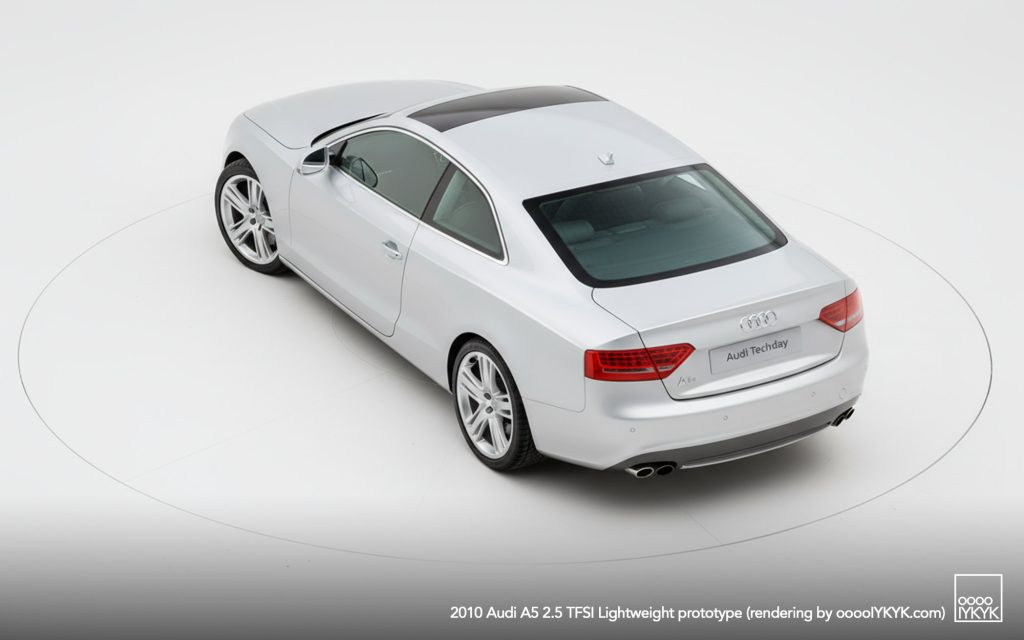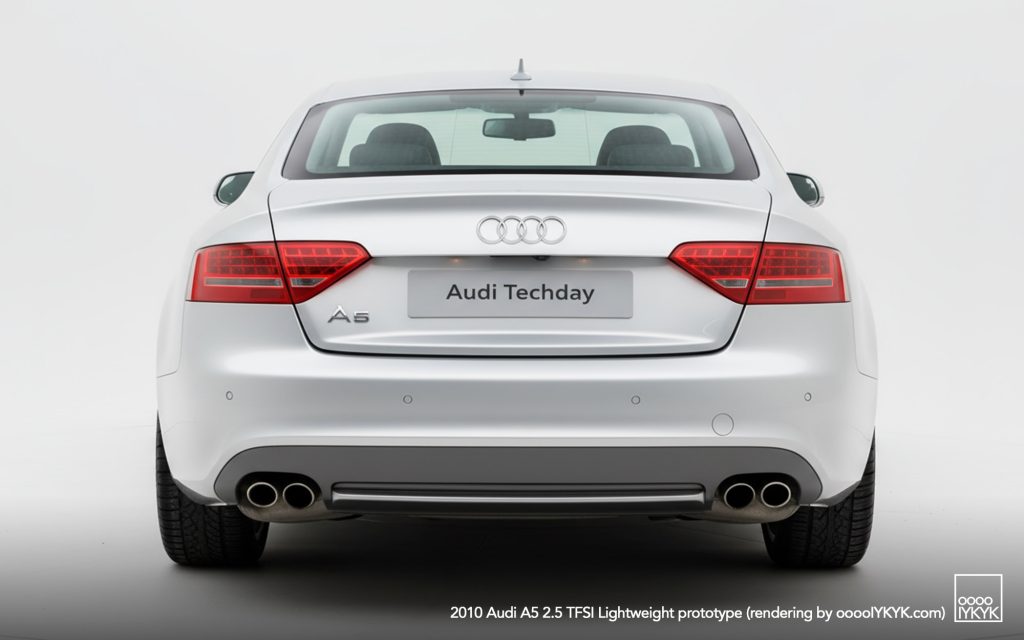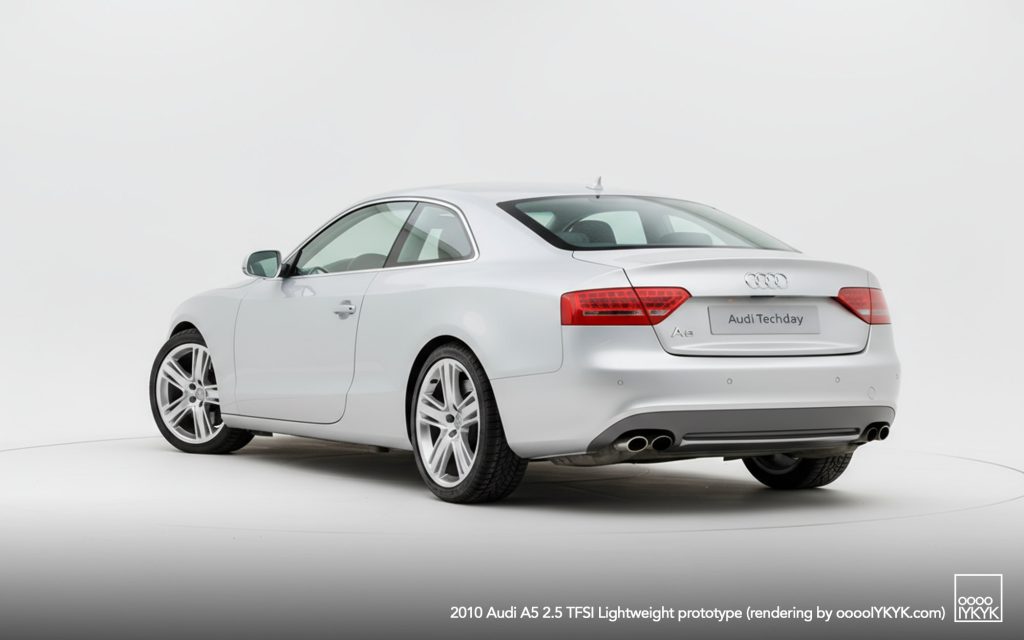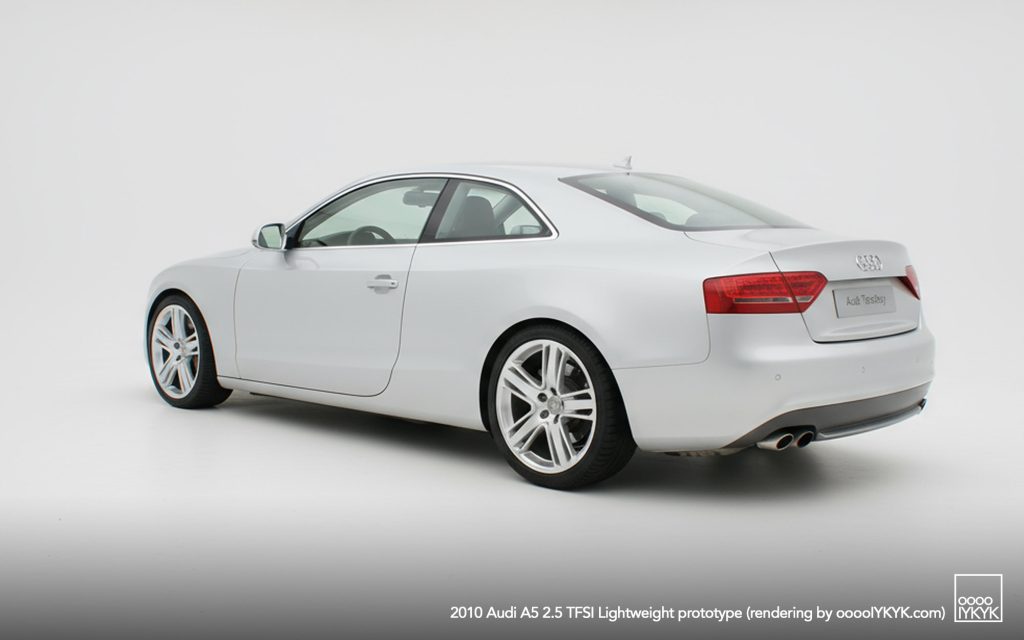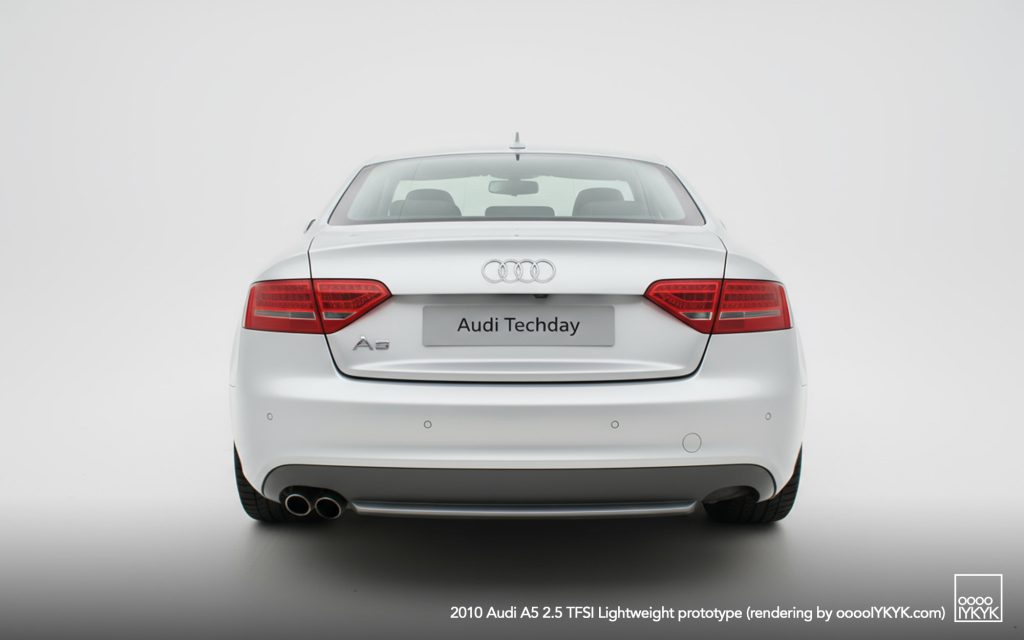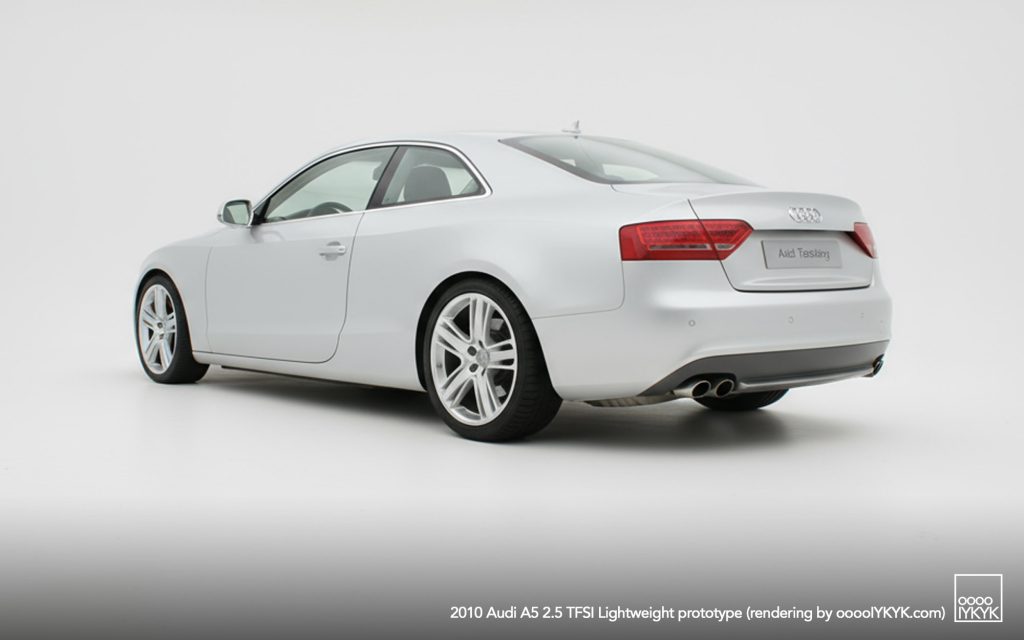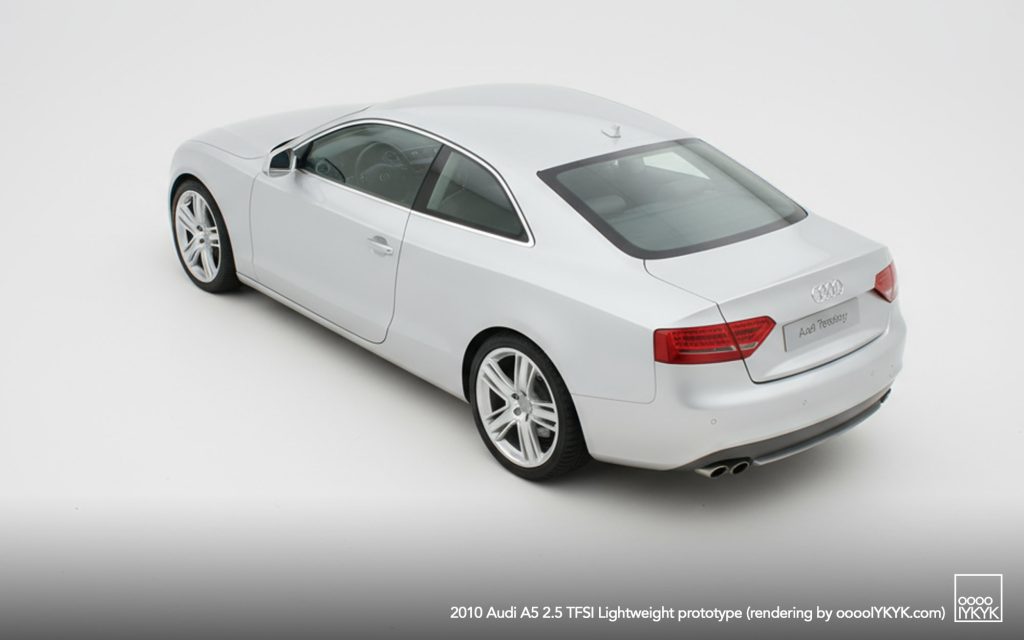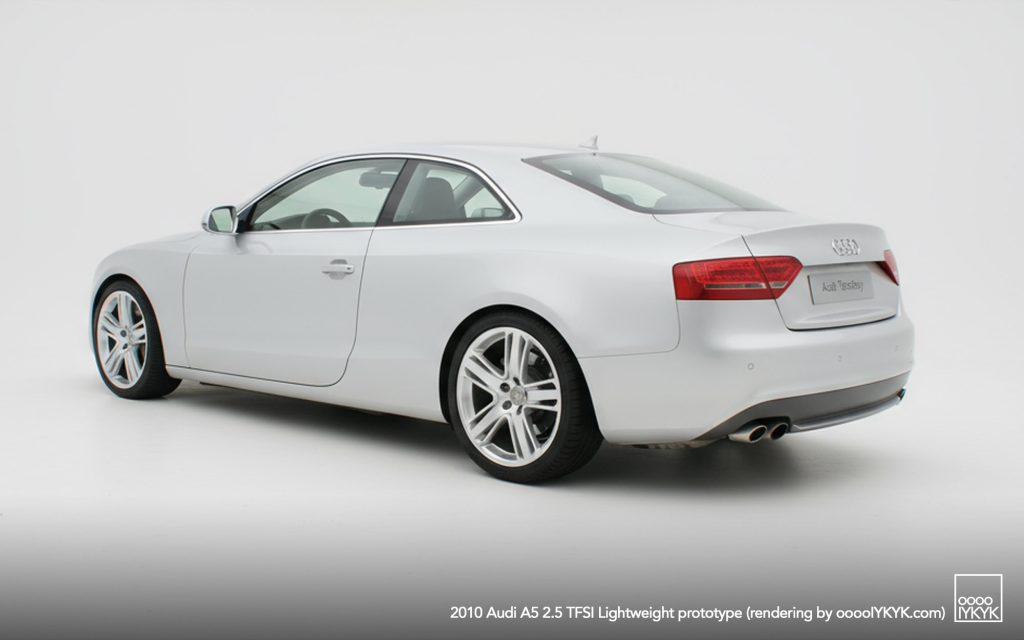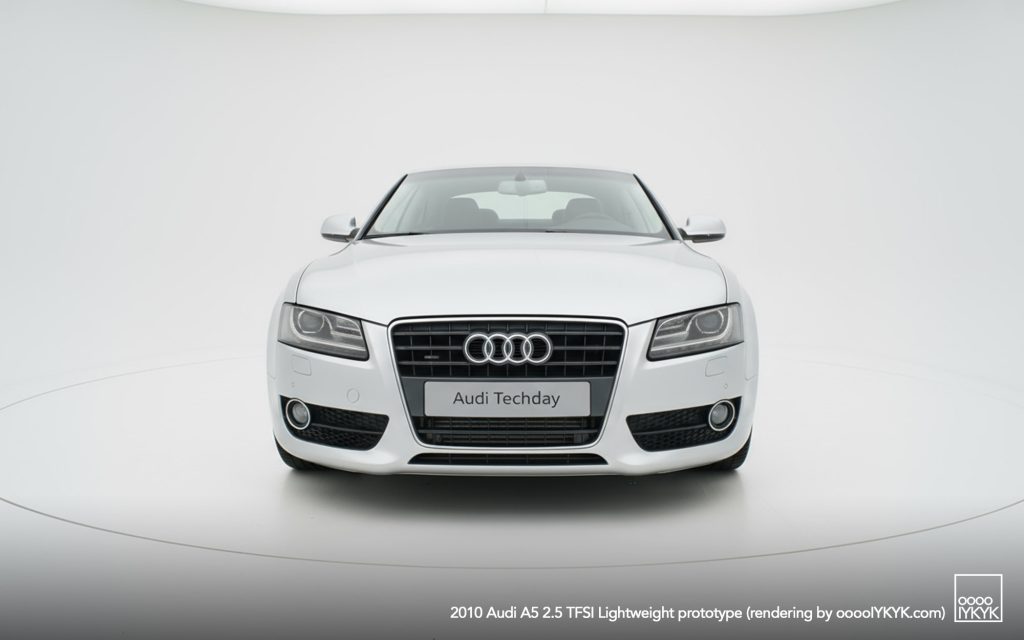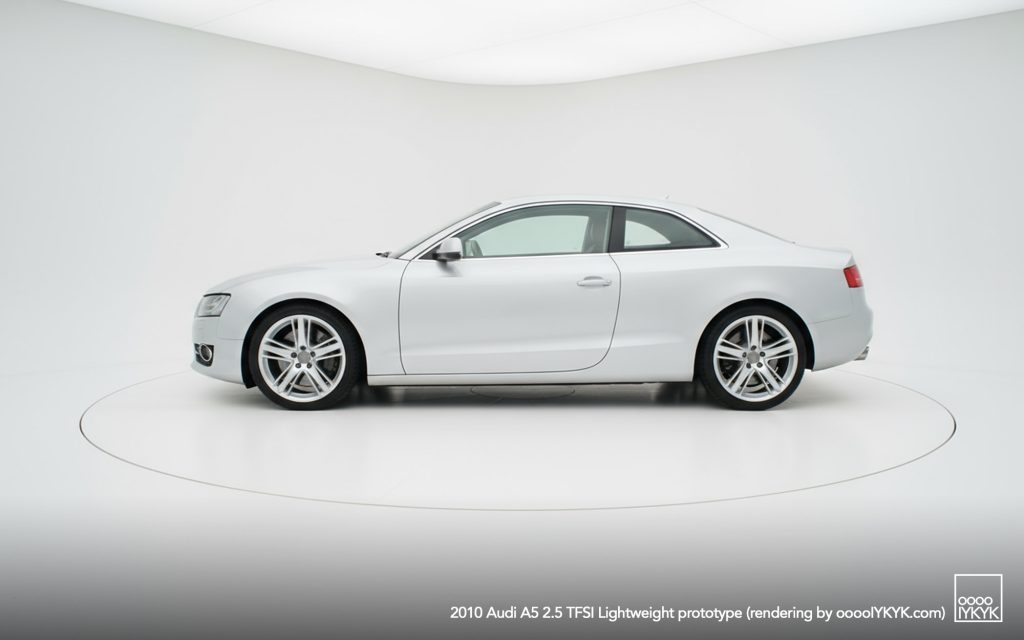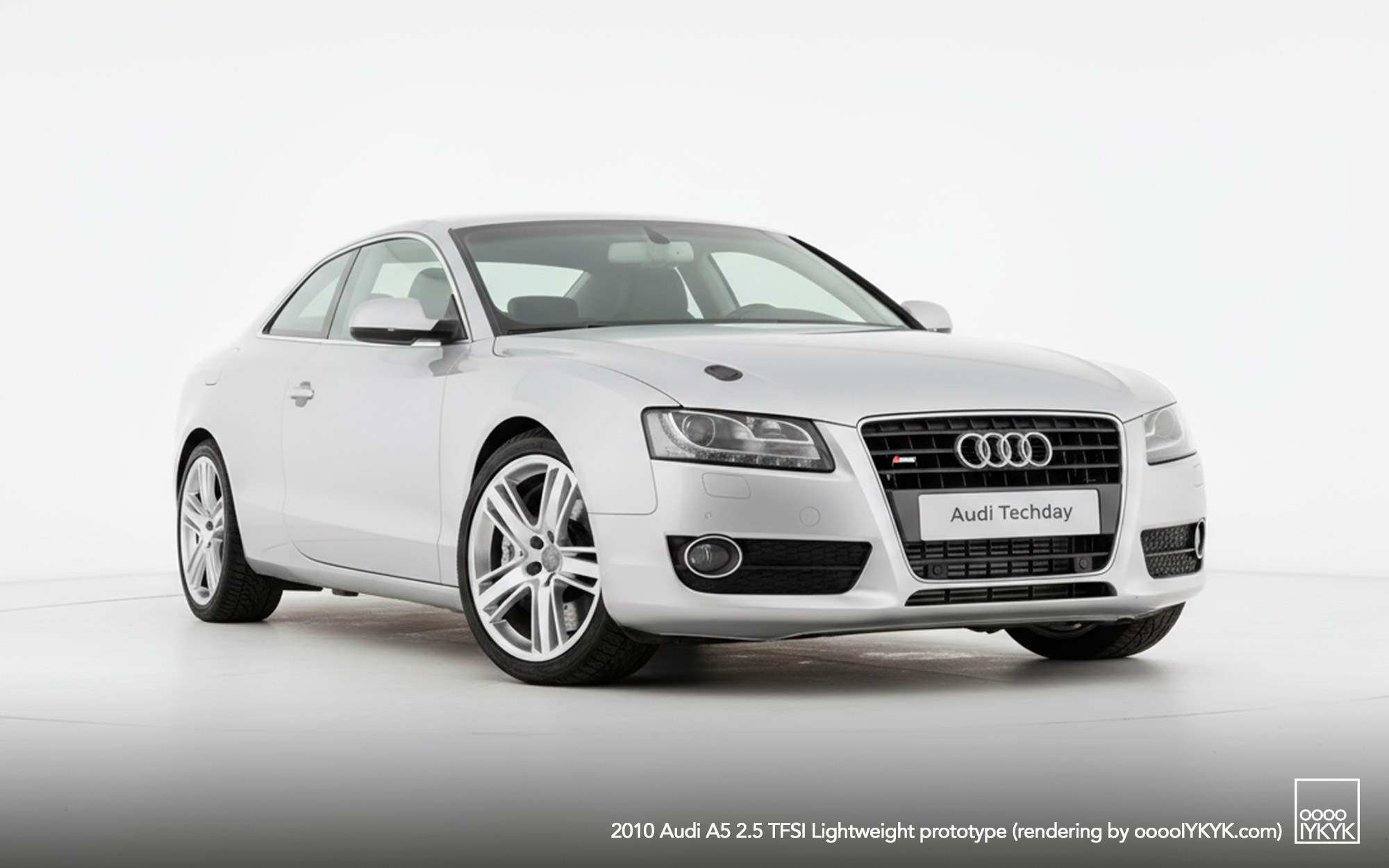What: Audi A5 Lightweight Coupé 2.5 TFSI Prototype
Model Family: A5 (B8, type 8T)
Debuted: N/A
Year: 2010
Registration Plate: Unknown
Status: Believed Destroyed
Number Produced: 1
Model / Generation Code(s): type 8T
Chassis / Matrix: B8, MLB Evo Prototype
Engine: 2.5 TFSI
Transmission: 6-speed manual
Power: 400 hp
Peak Torque: unknown
Weight: 3,086 lbs. (1,400 kg)
Acceleration (0-100 km / 62 mph: unknown
RELATED
Concept Cars: A5 2.0 TFSI Lightweight prototype, quattro Concept (2011)
Road Cars: A5 (type 8T), S5 (type 8T), RS 5 (type 8T)
Race Cars: none
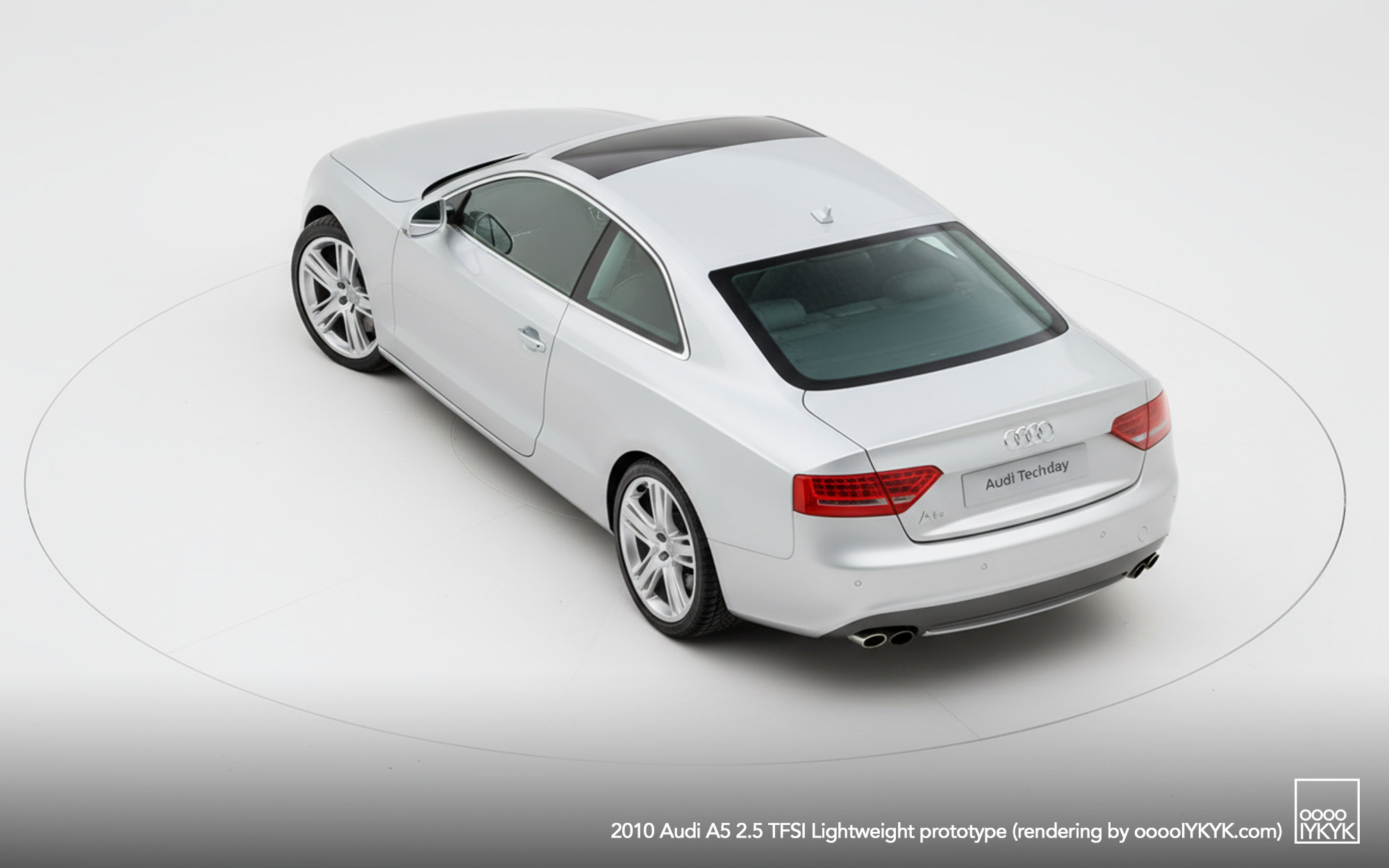
SUMMARY
The 2010 Audi A5 2.5T quattro Lightweight Test Mule, internally nicknamed “The Beast,” was an experimental prototype developed by quattro GmbH (now Audi Sport GmbH) to evaluate advanced lightweight construction techniques and high-performance drivetrain configurations. Built from a B8-generation Audi A5, the car served as a drivable development prototype that previewed both the MLB-Evo architecture and the powertrain configuration of the 2010 Audi quattro Concept shown at the Paris Motor Show.
OVERVIEW
The Beast was created in 2009–2010 as part of Audi’s lightweight engineering initiative centered at the Audi Lightweight Design Center (ALDC) in Neckarsulm, Germany. It combined a predominantly aluminum chassis with composite components and advanced bonding techniques that would later appear in Audi’s MLB-Evo platform used in production from 2015 onward. The car was intended as both a lightweight feasibility study and a mechanical test bed for the quattro Concept’s powertrain.
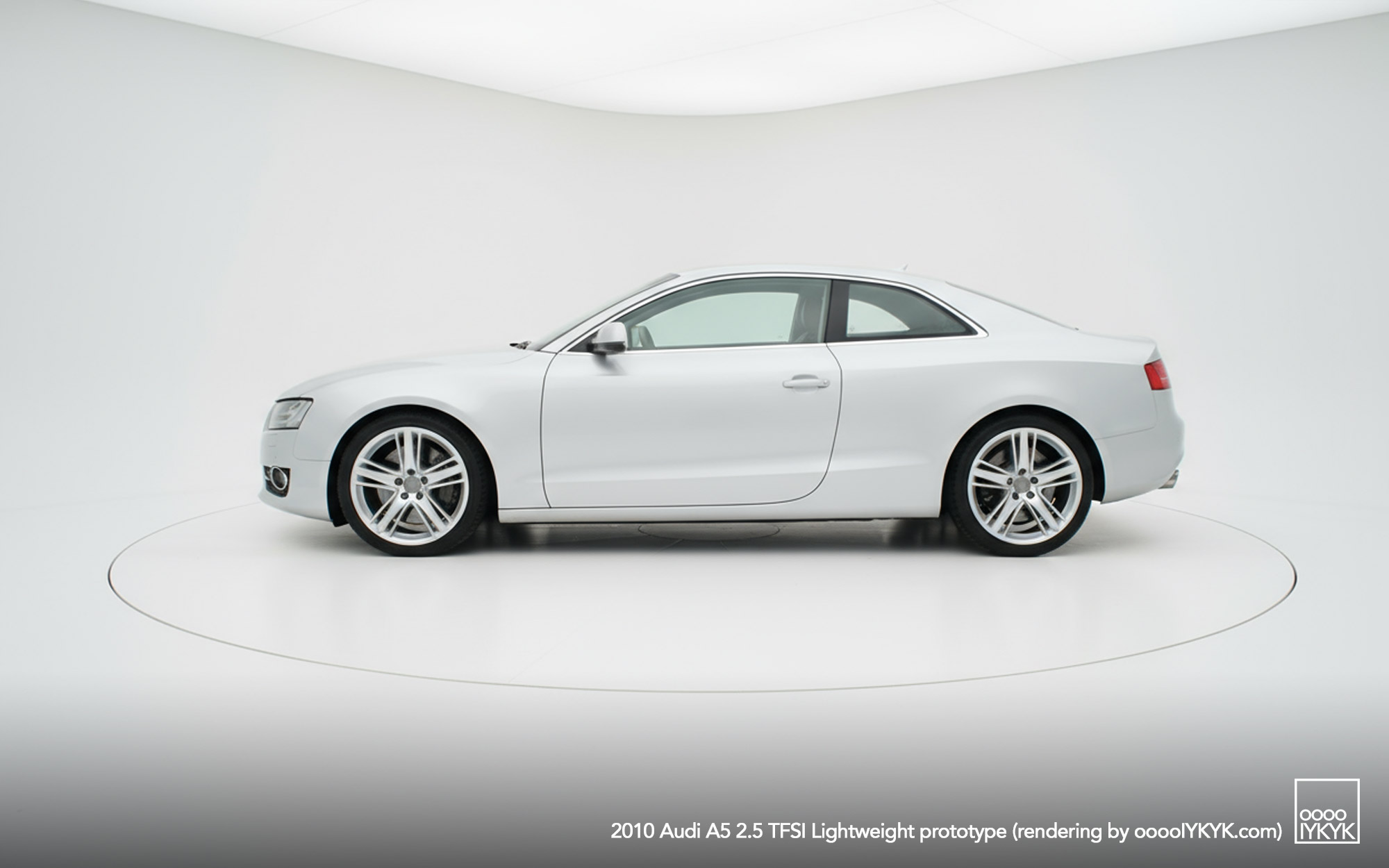
DESIGN & CONSTRUCTION
Although visually understated, the test car appeared as a standard A5 coupe painted silver and fitted with the RS 5’s winter wheel design, an S5 exhaust tips and rear valance. Underneath, however, the body structure was largely composed of aluminum, magnesium, and carbon fiber components. Based on information shared at the 2011 Lightweight Techday, Audi engineers are believed to have employed experimental joining methods—such as friction element welding, flow-drill screws, and adhesives—to combine multiple materials for optimal strength and reduced mass.
Lightweight body panels included a carbon fiber hood and trunk lid and aluminum doors, resulting in a curb weight of approximately 1,400 kilograms (3,086 pounds)—around 300 kilograms (661 pounds) lighter than the production B8 RS 5. Audi engineers had originally targeted an additional 100 kilograms (220 pounds) of further weight reduction for the eventual quattro Concept.
DRIVETRAIN & PERFORMANCE
The Beast was powered by a 2.5-liter turbocharged inline-five engine sourced from the TT RS and RS 3, but installed longitudinally and tuned to produce over 400 horsepower. The engine was paired with a six-speed manual transmission from the S4, replacing the heavier seven-speed S-tronic used in the RS 5. Power was sent to all four wheels via Audi’s crown-gear quattro system derived from the RS 5.
The car’s high power-to-weight ratio allowed for a 0–100 km/h (0–62 mph) time in the low four-second range, notably quicker than the contemporary RS 5’s 4.6 seconds. The car’s balance, responsiveness, and reduced mass delivered exceptionally neutral handling characteristics during testing.
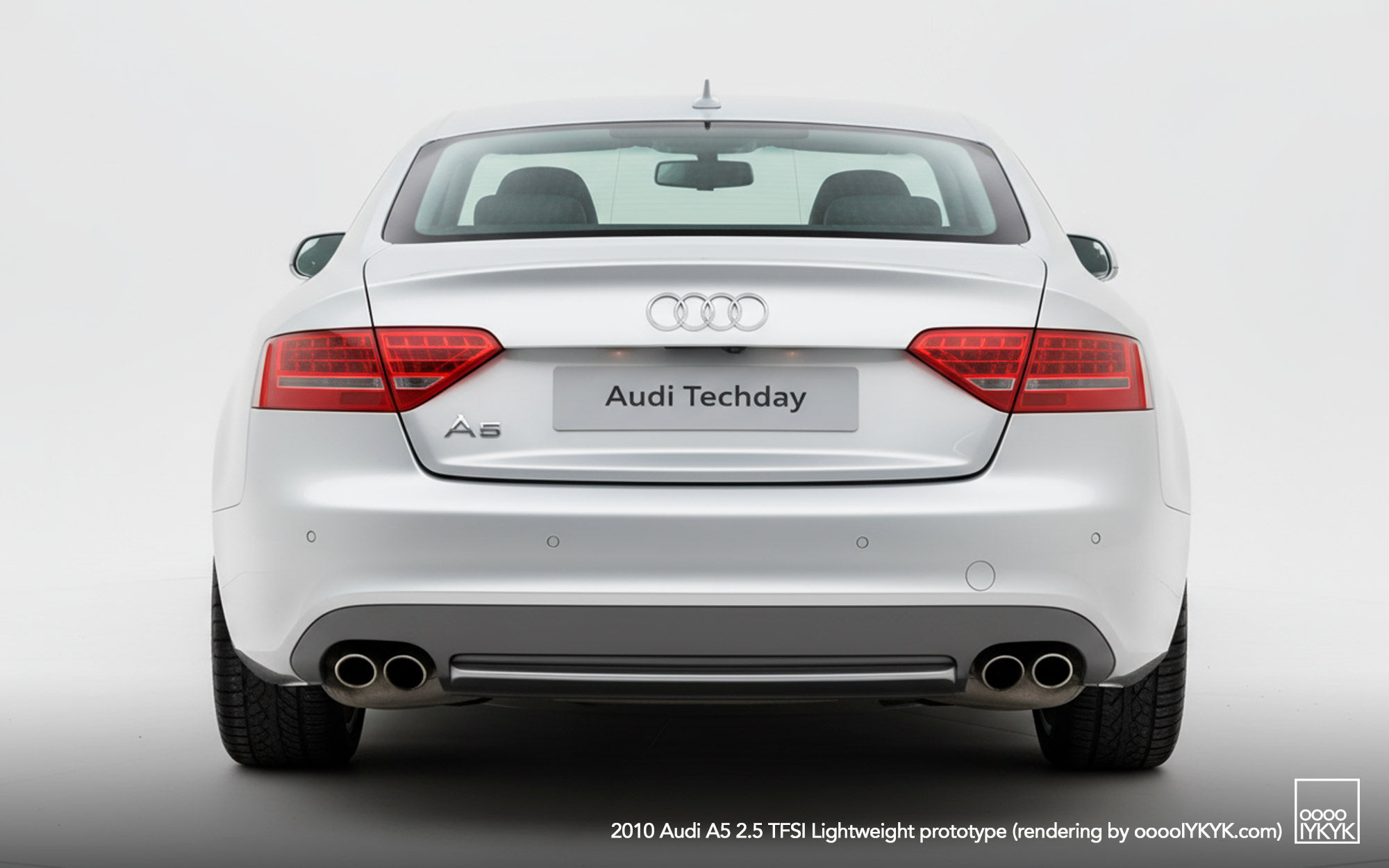
CHASSIS & BRAKING
Suspension components were believed to have been largely carried over from the RS 5, providing a direct and stable ride on track. Braking was handled by Audi Carbon Ceramic Brakes, also believed to be RS 5 specification, providing fade-free performance during extended testing sessions.
INTERIOR
Inside, “The Beast” featured Recaro shell-style sport seats matching the optional seats available in the RS 5. The otherwise standard A5 interior included small test-vehicle modifications such as a red-ringed shift knob and an engine kill switch located beside the shifter.
PURPOSE & TESTING
Audi constructed three to four examples of the lightweight A5 prototypes, which initially used a 2.0 TFSI engine before this one was reassigned to quattro GmbH for high-performance conversion. The 2.5 TFSI version was used to demonstrate Audi’s lightweight and modular platform strategies to both internal management and the press.
Testing took place near Neckarsulm, at a public driver-training facility where the car was driven on a closed course. The vehicle’s handling was described as exceptionally nimble, with abundant grip and minimal understeer. Power delivery from the tuned five-cylinder engine provided strong acceleration and a distinctive exhaust note characteristic of Audi’s performance heritage.
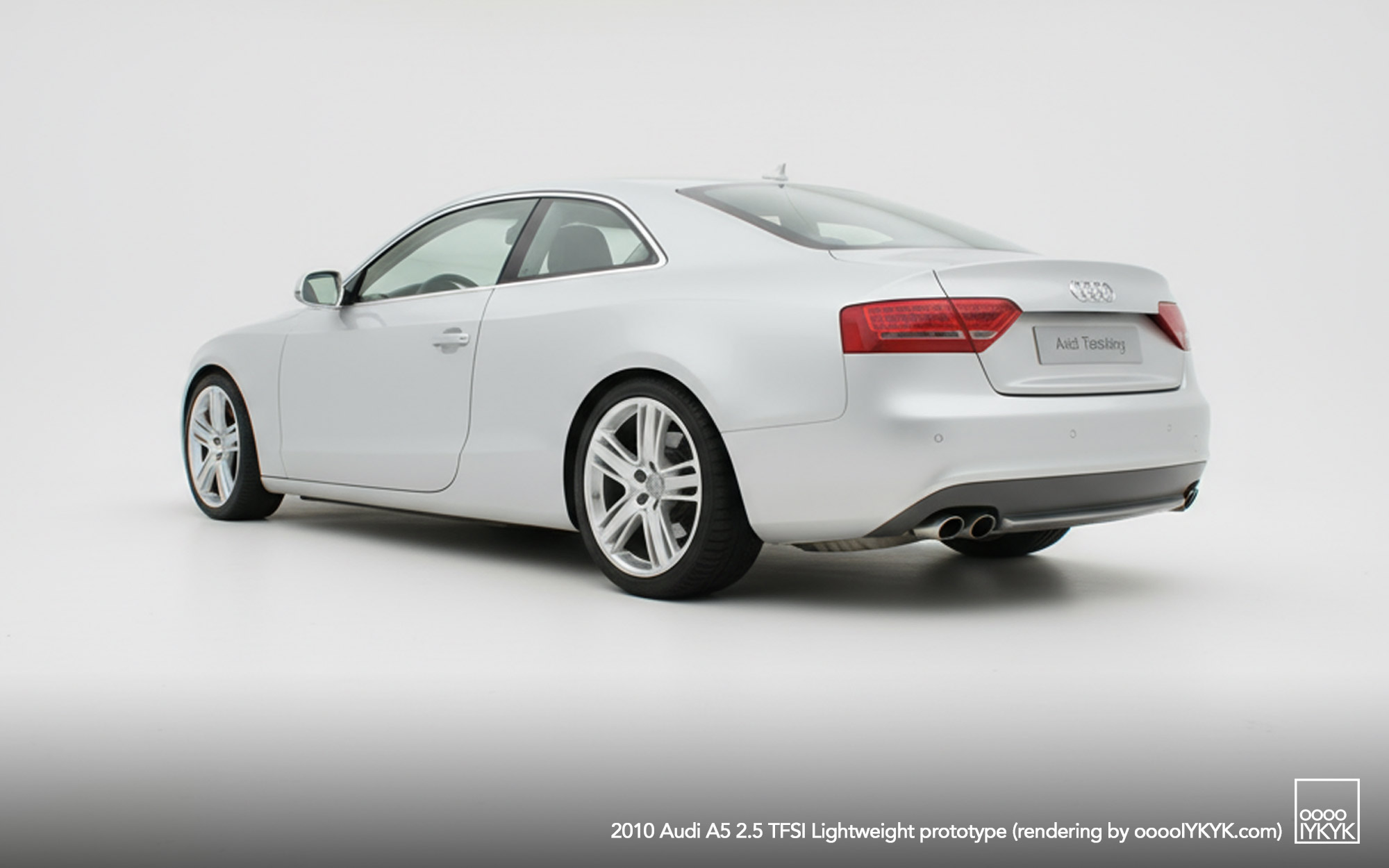
LEGACY & SIGNIFICANCE
Although never officially acknowledged as such, “The Beast” is widely believed to have been one of the earliest drivable prototypes of the MLB-Evo architecture, which became the foundation for subsequent Audi models including the A4 (B9), Q7 (Typ 4M), and A8 (D5). It demonstrated Audi’s capabilities in modular lightweight construction and predicted the company’s later focus on downsized, turbocharged powertrains paired with advanced materials engineering.
FATE
The fate of “The Beast” has been reported as destroyed. While some prototypes have been preserved by Audi Tradition, there are no confirmed sightings of the car since its testing period and one internal recount allegedly confirms the car’s destruction. Given Audi’s historical tendency not to retain engineering mules, it is highly likely the vehicle was later dismantled or scrapped.
SPECIFICATIONS (APPROXIMATE)
- Model year: 2010
- Platform: B8 Audi A5 coupe prototype (MLB-Evo precursor)
- Layout: Front-engine, all-wheel drive
- Engine: 2.5-liter turbocharged inline-five (TT RS/RS 3 origin)
- Power output: Over 400 hp (estimated)
- Transmission: 6-speed manual (S4 source)
- Drivetrain: Crown-gear quattro system (RS 5-spec)
- Chassis: Predominantly aluminum hybrid with magnesium and carbon fiber components
- Brakes: Audi Carbon Ceramic Brakes (RS 5-spec)
- Seats: Recaro shell-style sport seats (RS 5 optional type)
- Curb weight: 1,400 kg (3,086 lb)
- Performance: 0–100 km/h in the low 4-second range
- Length: approx. 4,630 mm
- Width: approx. 1,855 mm
- Height: approx. 1,370 mm
- Wheelbase: approx. 2,750 mm
SEE ALSO
- Audi quattro Concept (2010)
- Audi TT RS (8J)
- Audi RS 5 (B8)
- Audi MLB-Evo platform
PHOTO GALLERY
